| A once common sound in the Black Country was the
relentless 'thud, thud, thud' of the drop hammer, which
produced a wide range of products that were formed in a die,
beneath the hammer. Drop forging or stamping as it was
known, became a practicality thanks to James Nasmyth's steam
hammer, that was developed in the late 1830s and patented in
1840. Prior to this, manufacturers relied on the smith's
anvil, and the water-powered, and later steam-powered tilt
hammer, which was less powerful than Nasmyth's device. |
|
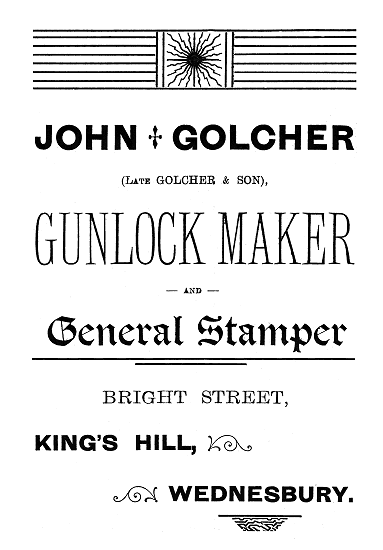
An advert from 1894. |
In
Kelly's Staffordshire Directory of 1896, John Golcher is
listed as a gun lock maker & general stamper,
in Bright Street, King's Hill. The same entry appears in
the 1904 edition. In Kelly's 1912 Staffordshire Directory
the business is listed as: John Golcher, general stamper, Bright
Street,
King's Hill.
The entry in the 1914 edition of Bennett's Business
Directory is very different: Golcher J, iron and steel
merchant, Bright Street, King's Hill.
On 23rd February, 1917 the business became a private
limited company, trading under the name of John Golcher Limited.
The firm produced stampings of all kinds for many
industries. In the late 1940s and the 1950s, two of their
customers were Ford, and Rolls Royce. |
|
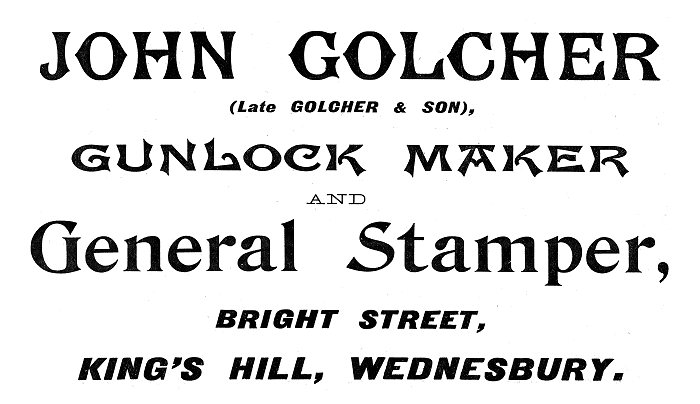
An advert from 1897. |
|
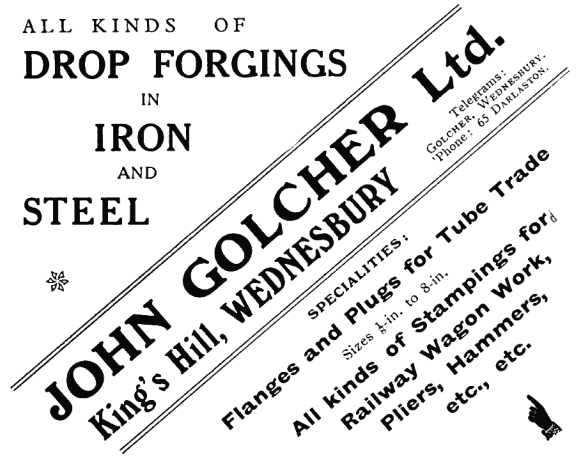
An advert from 1918. |
| The following photographs, taken inside the factory, are
courtesy of Sylvia Peters, one of my cousins. Her father, Ben
Platt, was a manager at the factory, and worked there for
many years. |
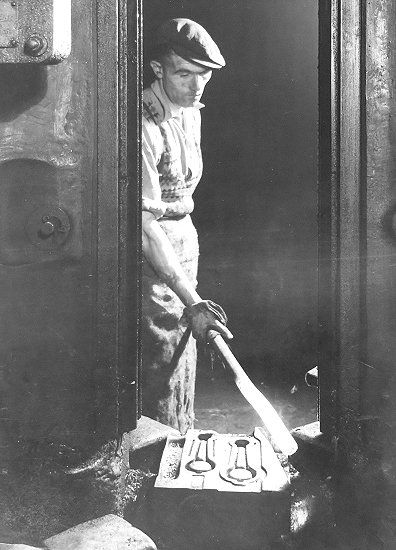 |
A stamper at work under the
hammer. The hot bar would have been held above the die while
the hammer dropped, and pressed the hot metal into the die
to stamp out the required shape. |
Chiselling-out a die by hand.
A very skilled job. |
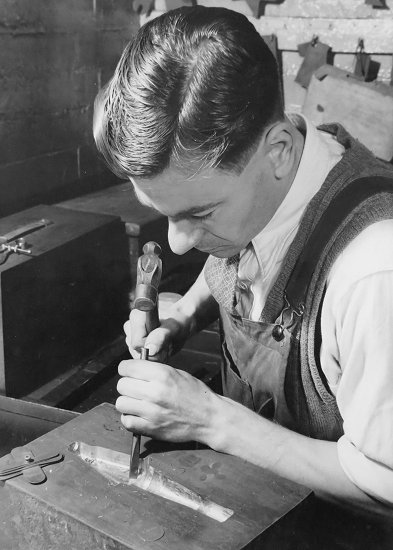 |
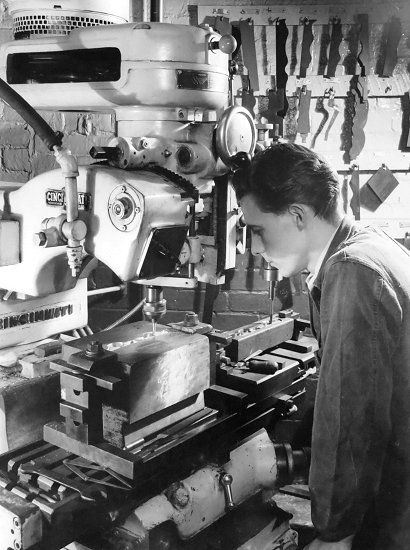 |
Dies had to be frequently
replaced, and so they were copied from a master, in the
machine opposite. |
|
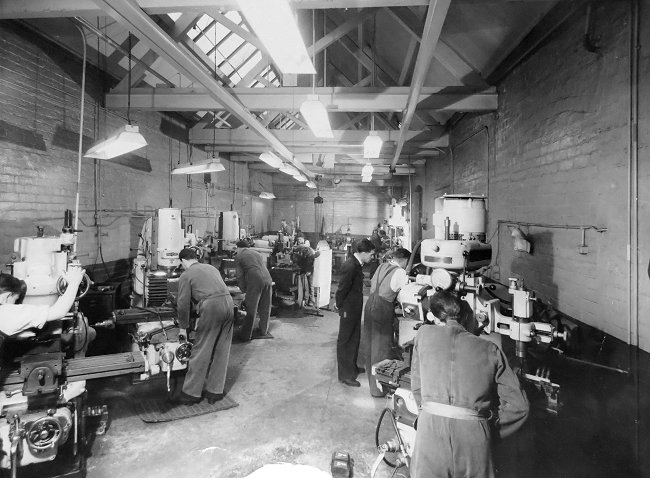
Milling and die copying machines
in operation. |
|
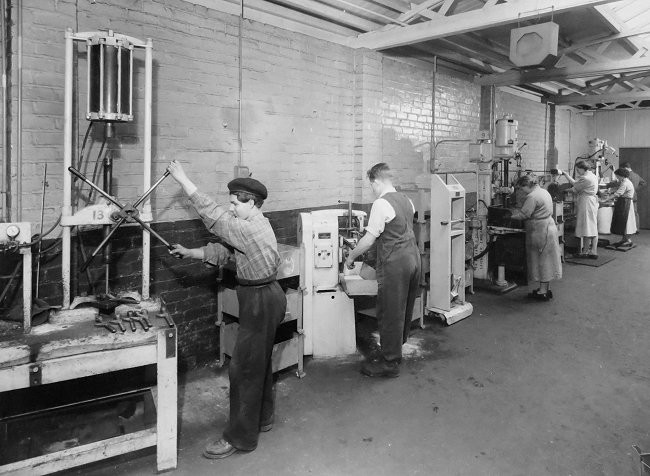
Another corner of the factory. |
|
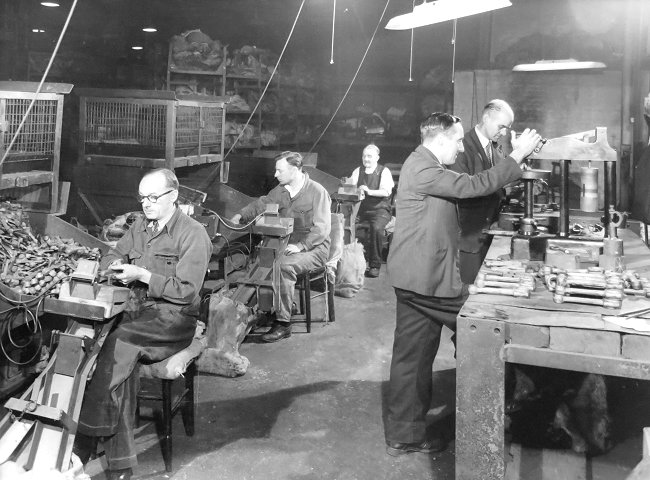
A final interior view of the
factory. |
 |
Return to
the
previous page |
|